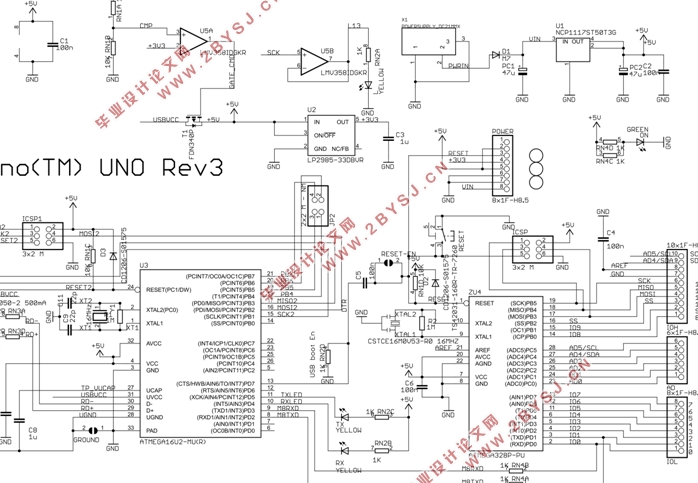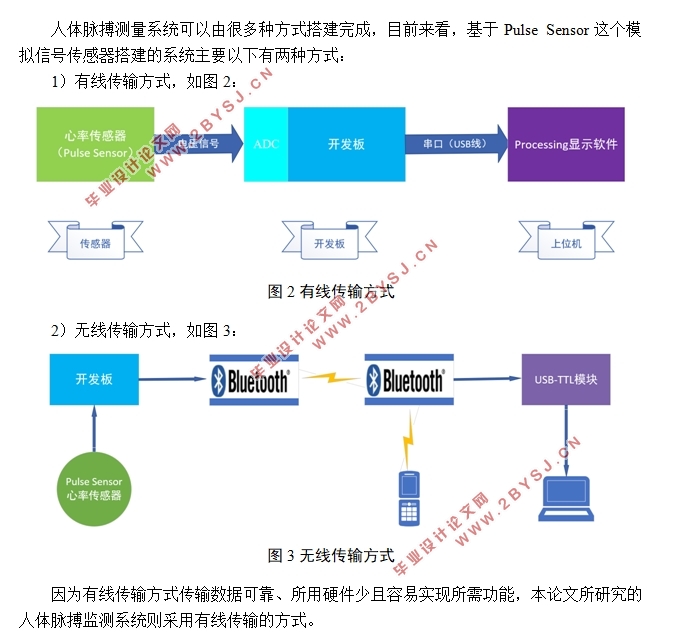基于单片机的人体脉搏监测系统的设计
无需注册登录,支付后按照提示操作即可获取该资料.
基于单片机的人体脉搏监测系统的设计(任务书,开题报告,外文翻译,论文12000字)
摘要
脉搏信号是一种常见的生物医学信号,是人体中重要的动力学信号之一,因此脉搏信号的处理和分析受到了极大的关注。随着电子科学技术的快速发展,人体的脉搏信号可通过传感器转化为模拟信号,处理和分析此模拟信号可以实现智能化脉搏检测,有利于生物医学的研究。
本论文的人体脉搏监测系统研究了一款基于光电反射式的模拟传感器对脉搏、心率进行测量,再使用单片机将模拟脉搏信号转换为数字信号,通过编程进行滤波消噪处理,植入算法进行计算后得到脉搏波形数据和心率数据,最后将脉搏波形和心率的数据通过USB上传到上位机进行实时的显示。
研究结果表明在整个系统中通过传感器对指尖等部位脉搏数据的采集,经过单片机处理后,可以将数据传入电脑后进行直观的观察,对人体健康能进行大致的判断。
关键词:脉搏信号;模拟传感器;单片机;编程
Abstract
Pulse signal is a kind of common biomedical signal, and it is one of the important dynamic signals in human body, so the processing and analysis of pulse signal has received great attention. With the rapid development of electronic science and technology, the pulse signal of human body can be converted into analog signal by sensor. Processing and analyzing this analog signal can realize intelligent pulse detection, which is beneficial to biomedical research.
In this paper, a kind of analog sensor based on photoelectric reflection is studied to measure pulse and heart rate, and then the analog pulse signal is converted into digital signal by single chip microcomputer, and the filtering and denoising processing is carried out by programming. After the implantation algorithm is calculated, the pulse waveform data and heart rate data are obtained. Finally, the pulse waveform and heart rate data are uploaded to the host computer through USB for real-time display.
The results show that the pulse data of fingertips and other parts can be collected by sensors in the whole system. After being processed by single chip microcomputer, the data can be transferred to the computer for intuitive observation, and the health of human body can be roughly judged.
Key Words:pulse signal;analog sensor;single chip microcomputer;programming



目录
摘要 I
Abstract II
1绪论 1
1.1目的及意义 1
1.2国内外研究现状 1
1.3研究内容及预期目标 1
2 脉搏简介 2
3系统硬件设计 3
3.1模拟传感器 3
3.1.1Pulse Sensor工作原理 4
3.1.2 Pulse Sensor的使用 5
3.2 Arduino单片机 6
3.3 Processing显示软件介绍 7
4系统软件设计 8
4.1脉搏测量 8
4.2心率变异性 9
4.3单片机程序设计 10
4.4单片机具体代码解释 10
5测试结果 16
6结论 18
参考文献 19
附录 20
致谢 21
